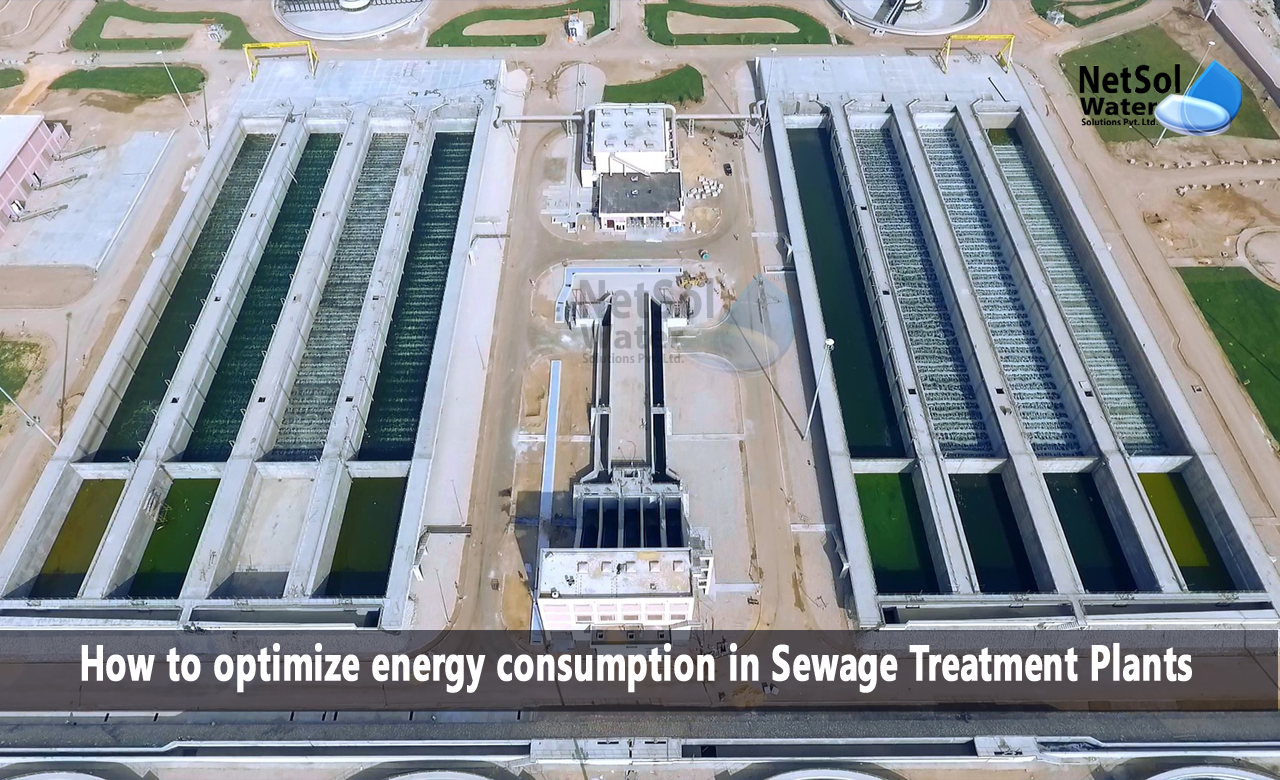How to optimize energy consumption in Sewage Treatment Plants?
Energy optimization in sewage treatment plants (STPs) is becoming increasingly important as the world focuses on sustainability and reducing carbon emissions. STPs are energy-intensive facilities, and finding ways to improve energy efficiency and integrate renewable energy sources can significantly reduce their environmental footprint. In this blog, we will explore strategies for optimizing energy in STPs, including efficiency improvements and the integration of renewable energy technologies.
Strategies for Increasing Efficiency and Using Renewable Energy:
1. Energy Audits and Performance Monitoring:
Conducting energy audits and regularly monitoring energy performance is a crucial first step in optimizing energy in STPs. These assessments help identify energy consumption patterns, inefficiencies, and areas for improvement. By understanding the energy requirements and evaluating the existing infrastructure, targeted optimization strategies can be implemented.
2. Process Optimization and Equipment Upgrades:
Process optimization plays a vital role in energy reduction. Evaluating treatment processes, equipment, and operational parameters can identify opportunities for energy savings. Upgrading equipment, such as pumps and blowers, to more energy-efficient models can significantly reduce energy consumption while maintaining treatment effectiveness.
3. Variable Frequency Drives (VFDs):
Variable Frequency Drives (VFDs) are an effective tool for optimizing energy in STPs. They allow for the adjustment of motor speeds based on the actual demand, resulting in energy savings. By matching the motor speed to the required flow or pressure, VFDs reduce energy wastage associated with over-pumping or throttling.
4. Heat Recovery:
STPs generate heat through various processes, such as anaerobic digestion and wastewater disinfection. Heat recovery systems can capture this excess heat and repurpose it for other purposes, such as space heating, water preheating, or sludge drying. Utilizing heat recovery technologies reduces the need for additional energy sources and maximizes energy efficiency.
5. Renewable Energy Integration:
Integrating renewable energy sources into STPs can significantly reduce their reliance on conventional energy and lower greenhouse gas emissions. Some viable options for renewable energy integration include:
· Solar Photovoltaic (PV) Systems: Installing solar PV panels on STP roofs or nearby open areas can generate electricity to offset the facility's energy consumption. Solar energy is a clean and abundant resource that can be harnessed to power various STP processes.
· Biogas and Anaerobic Digestion: Biogas produced through anaerobic digestion of sludge can be utilized as a renewable energy source. Biogas can be combusted to generate heat or converted into electricity through cogeneration systems, reducing reliance on fossil fuels.
· Wind Energy: In areas with suitable wind conditions, wind turbines can be installed to generate electricity for on-site consumption or to contribute to the local power grid. Wind energy provides a consistent and renewable power source.
6. Smart Grid and Energy Management Systems:
Implementing smart grid technologies and energy management systems can optimize energy usage in STPs. These systems enable real-time monitoring, control, and optimization of energy consumption, allowing operators to adjust processes and equipment based on energy demand and pricing.
7. Staff Training and Awareness:
Engaging STP staff in energy conservation efforts through training and awareness programs can create a culture of energy efficiency. Encouraging energy-conscious behaviors, such as turning off lights and equipment when not in use, can contribute to overall energy savings.
8. Collaboration and Funding Opportunities:
Collaboration with energy agencies, research institutions, and industry associations can provide access to funding opportunities, technical expertise, and knowledge sharing. Governments and organizations often offer grants or incentives to support energy optimization projects in wastewater treatment facilities.
Conclusion:
Optimizing energy in sewage treatment plants is crucial for achieving sustainability goals and reducing environmental impact. Through strategies such as process optimization, equipment upgrades, renewable energy integration, and smart grid technologies, STPs can significantly improve energy efficiency and contribute to a greener future. With continued innovation, collaboration, and investment in energy optimization initiatives, STPs can lead the way in sustainable wastewater treatment practices.
Netsol Water is Greater Noida-based leading water & wastewater treatment plant manufacturer. We are industry's most demanding company based on client review and work quality. We are known as best commercial RO plant manufacturers, industrial RO plant manufacturer, sewage treatment plant manufacturer, Water Softener Plant Manufacturers and effluent treatment plant manufacturers. Apart from this 24x7 customer support is our USP. Call on +91-9650608473, or write us at enquiry@netsolwater.com for any support, inquiry or product-purchase related query.



